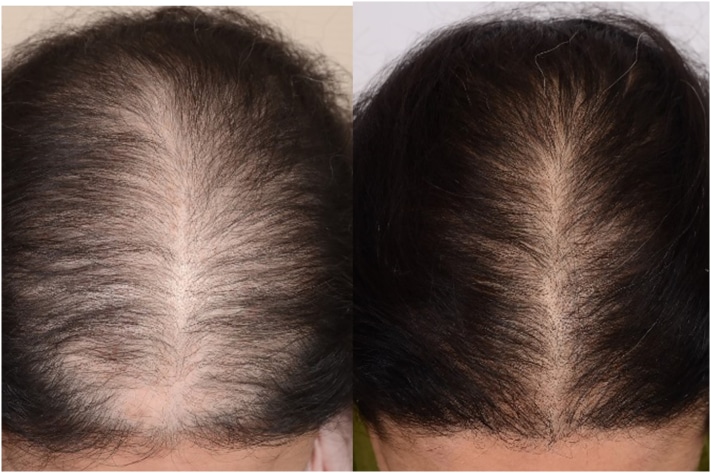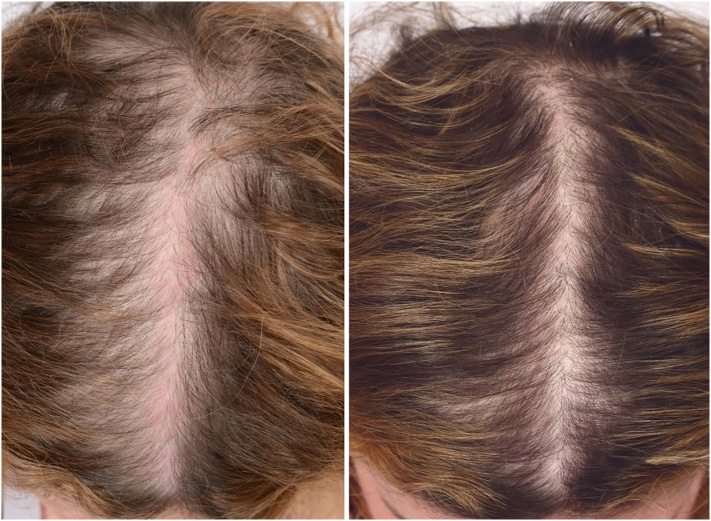
Hair loss and thinning can be a significant source of insecurity for men. While hair transplants are an effective solution to restore the appearance of your scalp, many male patients need additional help to achieve their desired results.
One option is PRP (Platelet Rich Plasma) therapy, which involves injecting plasma into the scalp to stimulate natural hair growth and improve the overall quality of hair follicles.
This article will discuss how PRP works and its potential benefits for men who have undergone a hair transplant.
What is PRP Therapy and How Does it Work
PRP therapy is a form of regenerative medicine that uses your body’s naturally occurring platelets to stimulate new hair growth. The process begins with blood being taken from you and then spun in a centrifuge. This separates the red blood cells and plasma, leaving an enriched platelet-rich plasma (PRP).
The doctor or nurse then injects the plasma directly into the scalp, stimulating new hair growth and improving the quality of existing hair follicles.
The injection of PRP helps to trigger natural cellular pathways that promote healing. This results in increased cell growth and enhanced blood circulation to the area.
Is there any scientific evidence that it works?
Several scientific studies have shown PRP can help increase hair density by up to 50% after four treatments. It also promotes thicker, healthier-looking hair strands. The plasma induces collagen production and encourages better hair follicle nutrition.
PRP therapy is becoming increasingly popular as an effective, non-surgical option for men who have undergone a hair transplant and are seeking additional help to promote more robust results.
While not suitable for everyone, those who do benefit may find PRP therapy helps give them a fuller head of hair quicker than they would otherwise achieve.
Benefits of Using PRP After a Hair Transplant for Men
Using PRP therapy after a hair transplant has several benefits for men.
-
Promote more robust results
It can help promote a more robust result from the hair transplant, with increased hair density and thickness in the treated areas. Additionally, since PRP relies on natural cellular pathways to stimulate healing, there is no risk of adverse reactions and results are often seen quickly.
-
Improve overall scalp health
Studies have also shown that PRP therapy can help improve overall scalp health by stimulating the growth of healthy follicles and encouraging more effective blood circulation to the area.
This helps nourish the scalp and prevents further hair loss or thinning long-term.
PRP also helps increase collagen production in the scalp, making hairs appear thicker and fuller while also helping reduce inflammation.
-
Non-invasive and relatively quick
PRP treatments only take a few minutes to complete each session. It is often done with other forms of treatment, such as oral medications or laser therapy, making it an excellent way to improve results when combined with other treatments.
Overall, using PRP after a hair transplant can be an excellent option for men seeking maximum results from their procedure. While more research is needed to understand its potential benefits fully, initial studies suggest that it may be a useful tool in improving hair density and quality for patients undergoing hair transplants.
How many people are happy with PRP Plasma for hair loss?
One scientific study asked 49 male and female patients who had plasma for hair loss. Let’s have a closer look at what they found. To make it easier for you to read, we created a table:
| Outcome | Satisfied Patients | Satisfied Doctors |
|---|---|---|
| Hair Thickness | 38% | 54% |
| Hair Density | 64% | 46% |
| Less Hair Loss | 48% | 20% |
| New Hair Growth | 57% | 68% |
| No difference | 4% | 4% |
| Negative Effects | 0% | 0% |
The Process of Applying PRP to the Scalp
Applying PRP to the scalp begins with a blood sample being taken from you.
This sample is then placed in a centrifuge that separates out the red blood cells and plasma, leaving behind an enriched platelet-rich plasma (PRP). The PRP is then injected directly into the scalp in carefully targeted areas.
Between three and four injections may be administered per session, depending on the severity of hair loss or thinning.
These injections are relatively painless and only take a few minutes to complete. The main goal of these injections is to stimulate natural cell pathways that promote healing, resulting in:
- increased cell growth.
- enhanced blood circulation to the area.
During each treatment session, additional PRP can also be applied topically as a type of serum to encourage new hair growth and strengthen existing strands.
This topical application has not yet been proven scientifically but has been used successfully by many patients who have experienced improved results after several applications.
Why is it essential to go to a reputable clinic for PRP Plasma?
For several reasons, going to a good clinic for platelet-rich plasma (PRP) therapy is essential. Still, one of the main reasons is that highly qualified medical staff’s expertise can make a significant difference in the effectiveness and safety of the treatment. It is of utmost importance that the doctor or nurse uses high-quality products from reputable manufacturers.
Safety:
A reputable clinic will prioritize patient safety by following strict protocols and maintaining high hygiene standards. They will use sterile techniques and ensure that the PRP preparation process is carried out in a controlled environment. This reduces the risk of infection and other complications associated with the procedure.
Expertise:
A good clinic will have trained and experienced medical professionals specialising in PRP therapy. They will have the knowledge and skill to perform the procedure accurately, ensuring the best possible outcomes. The medical staff’s expertise can make a significant difference in the effectiveness and safety of the treatment.
Quality of PRP preparation:
PRP therapy’s success depends on the PRP solution’s quality. A reputable clinic will have access to advanced equipment and follow standardized protocols for preparing PRP. This ensures that the concentration of platelets and growth factors in the PRP is optimal for therapeutic benefits.
Reputation and reviews:
Opting for a well-established clinic with a positive reputation in regenerative medicine can give you confidence in the quality of their services. You can research online reviews, seek recommendations from trusted sources, or consult with healthcare professionals to decide which clinic to choose.
Choosing a good PRP plasma therapy clinic ensures that you receive safe, effective, and reliable treatment that aligns with your specific needs.
Does it matter what type of PRP equipment the clinic uses?
Yes, this makes a difference. The most crucial factor is how many platelets the product contains. On top of that, the quality of the platelets in the solution is a significant factor. The higher the number and the better the platelets’ quality, the better the results for your hair.
Before And After PRP Plasma For Hair Loss

Potential Risks Associated with PRP Treatment
Generally speaking, PRP treatment can be a great way to enhance the results of your hair transplant. Because plasma is derived from your own body, it is impossible to get an allergic reaction. Minor risks include inflammation, pain and swelling at the injection sites.
Inflammation at the injection site can occur but usually resolves itself after a few days. To minimize this risk, your practitioner will use an extra small and gentle needle. Despite that, pain and swelling can occur after PRP injections into the scalp; however, these symptoms should resolve within a few days.
Overall, PRP treatments after hair transplants for men are a very safe option, risks are usually minor and temporary. On top of that, by choosing a qualified doctor or nurse, these risks can be minimised significantly.
Who can not have PRP Plasma after a hair transplant?
While most people can have a PRP plasma treatment, a few exceptions exist. These include people with certain medical conditions. For example, if you do not have enough platelets in your bloodstream or if these platelets do not function properly. You should also not proceed with a PRP plasma treatment if you had a recent viral illness or infection. This is because your immune system can be overreactive and affect how your platelets work.
You should also not take any anti-inflammatories for at least 48 hours before you have the treatment. Another medication that can impair the results of the treatment is steroids. This means that if you had to take steroids within the last two weeks, you are not a suitable candidate for PRP Plasma treatment.
Other reasons include cancer, anaemia and smoking.
Before And After PRP Plasma For Hair Loss

How many treatments will I need?
Even though there is quite a good amount of scientific evidence that plasma works, there is still some uncertainty about how many treatments are necessary for best results. Most doctors recommend having three treatments monthly or every six weeks. After that, you can maintain your results with three monthly treatments over the first year.
If you feel the treatment works for you, discussing with your doctor how often you would like to continue your PRP plasma treatments is probably best. Most people opt to have maintenance treatments every 6 to 12 months, but this varies from person to person.
PRP Plasma to Enhance Hair Growth After a Hair Transplant for Men
PRP Plasma is an excellent option for men seeking the most out of their hair transplant.
It can help promote more robust results with increased hair density and thickness in the treated areas.
The treatment helps boost overall scalp health by stimulating healthy follicles and improving blood circulation and collagen production.
If you’re considering undergoing a hair transplant or seeking additional ways to enhance your existing results, consider exploring what PRP Plasma offers as an effective way to improve your appearance naturally!

Drug Des Devel Ther. 2022; 16: 635–645. Anon Paichitrojjana 1 and Anand Paichitrojjana 2 Platelet Rich Plasma and Its Use in Hair Regrowth: A Review.





